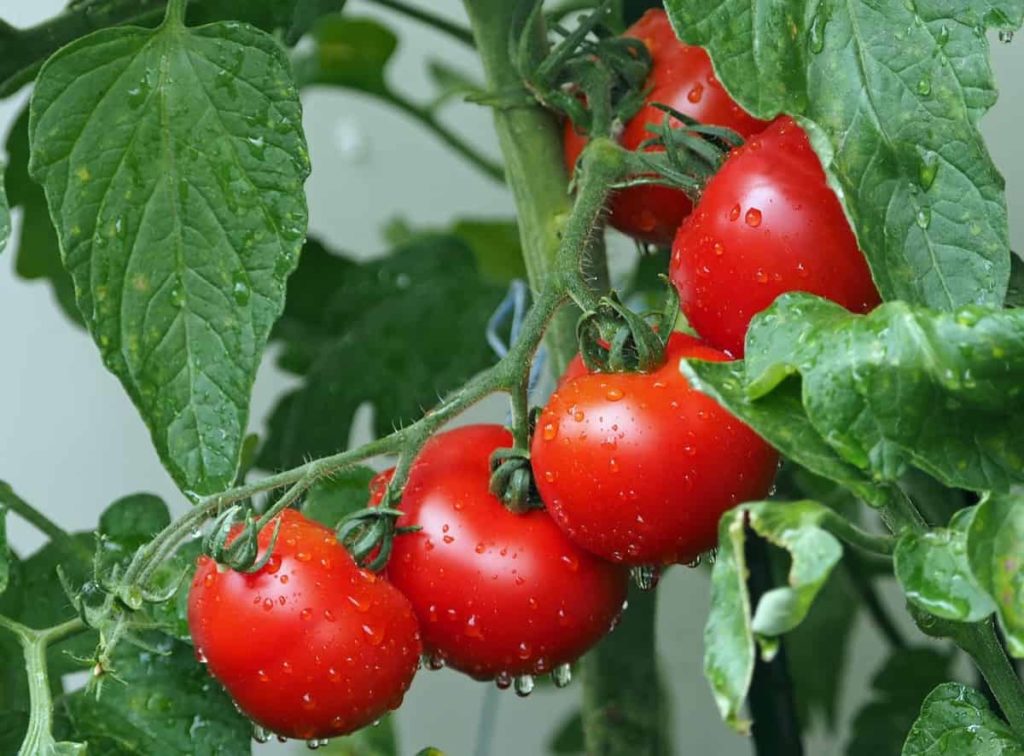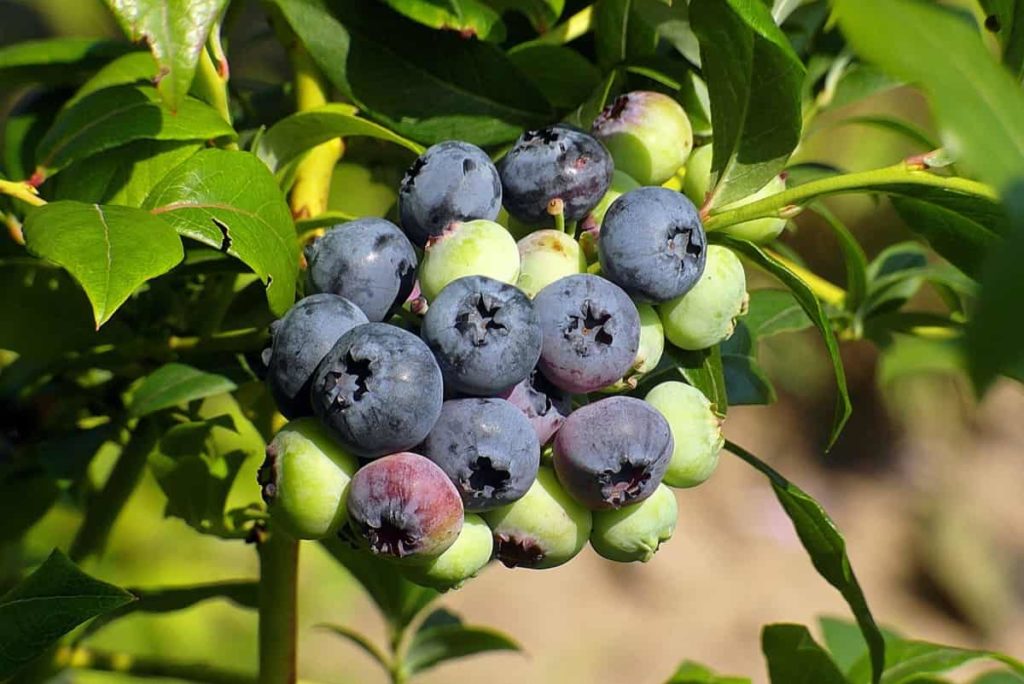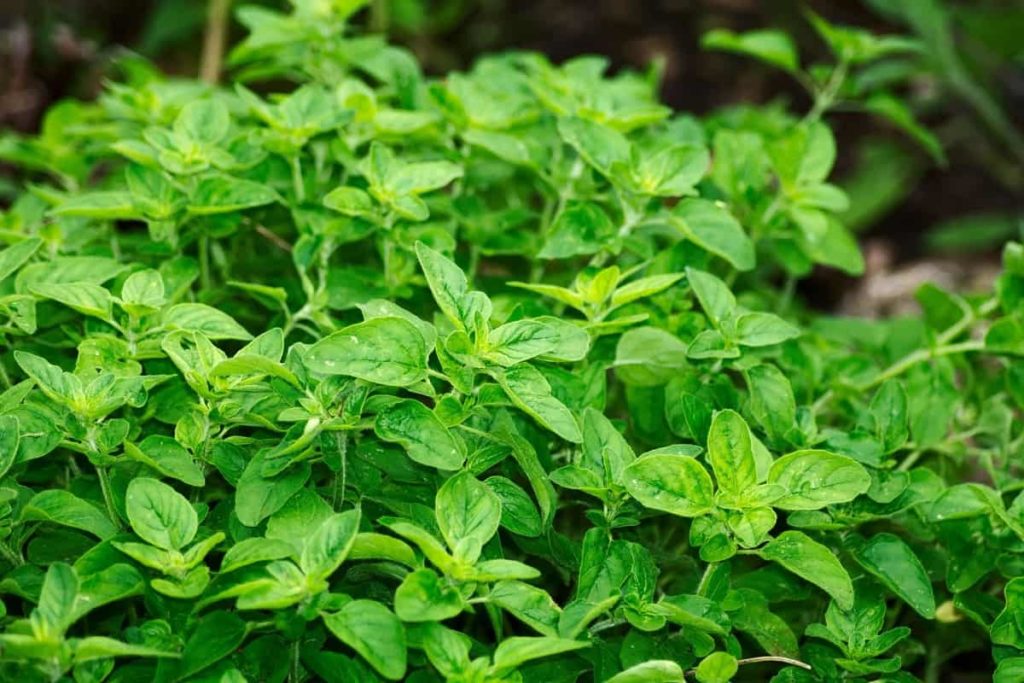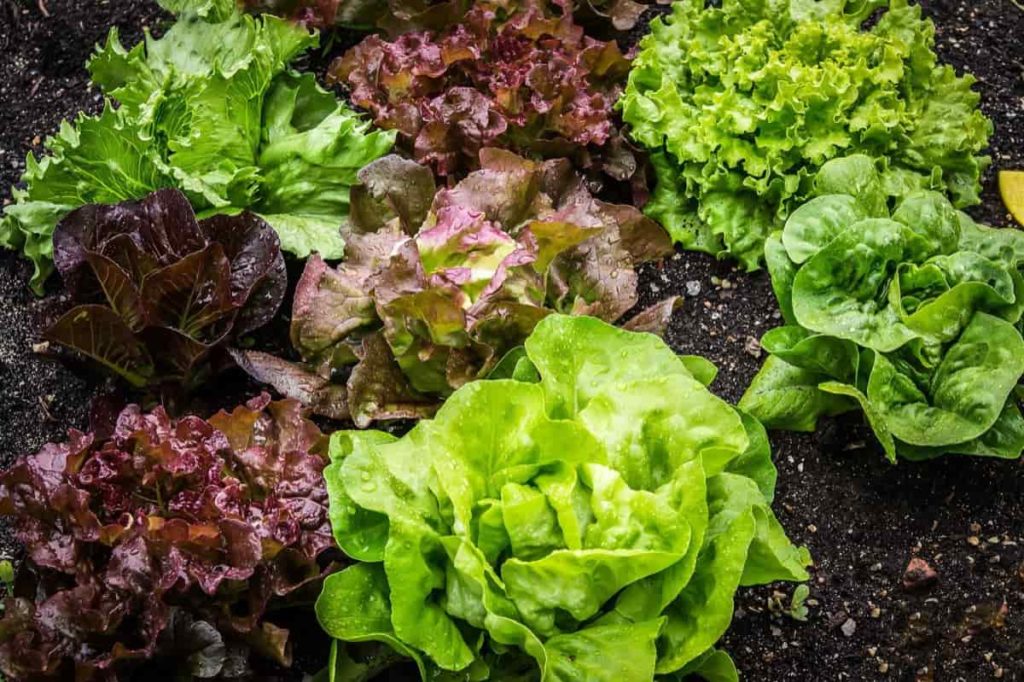Gardening is more than simply a source of tasty and healthy food. Growing your plants is essential for your health, whether you consume them or just enjoy their beauty. Spending time in nature has been taken to relieve stress and improve physical health through the physical effort of caring for your plants. In this article, we have covered low-maintenance indoor plants, home-garden plants, and some of the easy vegetables to grow in the USA in pots and in the backyard all year round.
Some of the best indoor plants for beginners to beautify your landscape, the best and easy vegetables to grow at home for beginners and the same goes for herbs, flowers, and fruits too. We have provided information about everything required to set up a home garden for vegetables, fruits, herbs, and flowers in the USA. We hope this article will help you in building a successful home garden.
Easy plants to grow at home in USA
Vegetables to grow indoors in containers in USA
Tomatoes: Tomatoes are simple to grow in pots. Most tomatoes like large pots and require staking or a cage. This protects heavy fruit from breaking vines. Buy short, stocky tomato seedlings without flowers. Larger tomato varieties demand larger pots. Cherry tomatoes don’t need as much space and soil as beefsteak tomatoes.

Onions: Onions grow well in the ground or containers. Water is the most critical factor for container-grown vegetables. Loose, well-drained soil prevents bulbs from rotting. Small roots make it difficult for bulbs to get enough water to develop. Containers can hold white, yellow, or red onions.
Peas: Snow or sugar snap peas can be grown in containers. Both plants’ edible pods result in a larger yield and minimum shelling, making them suitable for pots. Window boxes, half barrels, and other containers need light for growing onions. Seed germination requires well-drained, 1-inch-deep soil. They’ll require help as they grow. Use a potted trellis, a tomato cage, or a bamboo teepee to keep vines at a reasonable height. Watch for caterpillars in the spring. Vine height is 5 feet.
Peppers: Peppers thrive in hot temperatures and the sun. They require frequent watering and drainage, especially in containers. They come in different colors and can brighten any patio or entryway. You can choose from several hot or sweet options depending on your taste.
Lettuce: Salad greens grow quickly in containers. Container gardening makes weeding and pest management easier than in-ground planting. Most lettuces and salad greens are spring crops, although some are heat-tolerant. As the season warms, move your container to a cooler, shaded place to prolong your crop.
Fruits to grow indoors in containers in USA
Strawberries: Strawberries in containers are fantastic. As perennials, you only need to plant them once. Then bring them inside over the winter to protect the roots from frost. Everbearing strawberries are great since they provide two harvests a year.
Lemons: Lemons thrive in containers. Even though it’s a tropical fruit, gardeners in cooler climates have had luck growing it in pots. Some types grow better under particular situations, although most are OK.
Apples: Dwarf apple trees are great for pots and balconies. If you want to grow an apple tree in such a tiny space, it would be best to choose a variety that doesn’t need to be pollinated by other plants.
Blueberries: Blueberries in containers are different. A healthy yield requires at least two plants. They’ll produce throughout June-August. Blueberries require a 22-inch-diameter, 18-inch-deep container, and peat-based acidic soil.
In case you missed it: How to Grow Jasmine Flowers at Home in the USA: From Seeds, Cuttings, Faster, In Backyards, Indoors, and In Containers

Figs: As figs like mild temperate areas (USDA Zones 8-10), it’s better to grow one in a container if you have hard winters or limited space. Choose a pot-friendly type and give it plenty of sun. Prune and fertilize regularly. This can be best grown when placed on a balcony.
Herbs to grow indoors in containers in USA
Basil: Basil is simple to produce indoors and is used in cuisines across the globe. Plant seeds or tiny plants in organic soil. In winter, avoid cold, draughty areas to grow basil. Basil doesn’t last long inside. You can use it for weeks until the stems get woody—plant seeds every few weeks to maintain a supply.
Chives: The prickly leaves of this onion-flavored plant decorate eggs, soups, and salads. Snip individual leaves or give the plant a “crew cut” to fix droopy leaves. Leave 2 inches so plants can resprout. Plant a bought plant in organic soil. Chives thrive in south-facing windows.
Parsley: Parsley grows easily. You can purchase seedlings or start from seed. Soak parsley seeds before sowing. Parsley enjoys the sun but can accept shade too. It’s frost-hardy. To harvest, cut stem bases. Like most herbs, it is harvesting yields more.
Mint: Mint thrives in containers. Keeping some mints in a container is the only way to keep them from taking over your garden. Many mint kinds are lovely and make great planters. Mint is simple to cultivate, which is why it’s so popular. Mint prefers full sun but tolerates shade. Some, like spearmint, can grow tall and lanky; check your plant tag for directions.
Oregano: Oregano appears in Italian, Mexican, Central American, and Middle Eastern cuisines. Prepare tomato sauces and meat dishes using cut stems and the leaves of this plant. On drying, the leaves get a stronger aroma. Oregano grows like mints—Water the plant before it gets dry. Provide moderate to bright light.
In case you missed it: How to Grow Rose Flowers at Home in the USA:: From Seeds, Cuttings, Faster, In the Backyard, Indoors, and Containers

Flowers to grow indoors in containers in USA
Petunias: Petunias are popular in pots. Their trumpet-shaped blooms bring color to the surroundings. After the last frost, plant petunias in well-drained soil and full light. They’ll have fewer flowers in partial shade—separate plants by 1 foot. Heat-tolerant plants don’t need daily watering. Once a week is enough. Remove dead flowers to prolong blooming.
Marigolds: Marigolds bloom red, orange, and yellow throughout summer. Depending on the 50 species, blooms grow alone or in bunches. Most marigolds can be planted anytime throughout the summer, although early spring is best. They love the sun and heat. If they’re in the shade, mildew slows their development.
Chrysanthemums: Chrysanthemums come in many varieties and colors. Both hardy and florist chrysanthemums are popular. Hardy chrysanthemums can overwinter in a container garden in colder temperatures. Florist chrysanthemums thrive in moderate climates, but they’re fragile and need extra care. Late-blooming chrysanthemums are generally the final flowers to flower before winter.
Daffodils: Daffodils, often called Narcissus, are hardy spring and autumn flowers. Daffodils resemble a trumpet with six leaves. Yellow, white, or a combination are popular daffodil flower colors. Daffodils smell nice. Daffodils make fantastic balcony containers.
Geraniums: ‘Dark Red’ and ‘White Watermelon’ geraniums appear natural on November summer porches. Give these annuals 4 to 6 hours of daily sun. Pick off fading flowers to stimulate new blooms, and feed pots every two weeks with half-strength water-soluble fertilizer. Before frost, bring them inside to enjoy as houseplants.
In case you missed it: How to Grow Indian Vegetables in USA: at Home, in Backyard, and Pots – A Step-by-step Guide

Plants to grow outdoors in the backyard in the USA
Vegetables to grow in the backyard in the USA
Spinach: Spinach is the simplest vegetable to cultivate. It needs well-drained, composted soil. It grows in the sun or shade. It’s better to direct sow spinach. A few weeks after planting spinach seeds, you must thin them. Remove any clustered areas. Spinach is cold-hardy and can be grown year-round. It can endure 15 F.
Green beans: Growing green beans is easy and yields a lot. Another plant you must direct sow. Green beans come in various varieties, so choose carefully. Tender beans grow on a vine. For easy plucking, plant them on a trellis.
Radishes: It is possible to harvest radishes in as little as 24 days after planting, and they can be mixed with slower-growing veggies. After sprouting, thin the seeds to a spacing of 2 inches or more. Add roughly a half-inch of compost or soil on top of the seeds.
Lettuce: Lettuce can be direct-seeded or grown indoors for transplanting. It’s one of our few year-round crops, although, in hot weather, it should be sheltered and picked smaller. Lettuce grows more slowly and “bolts” later in shadow, allowing for extended harvesting. You’ll never tire of lettuce’s leaf shapes and green and red tones. Cut leaf lettuces as they develop to get many harvests from the same plant.
In case you missed it: Home Gardening in the USA, How to Start, Tips, Ideas

Carrots: Carrots are simple to grow in loose, sandy soil in spring and autumn. Some carrot types are disease- and pest-resistant and vary from purple to white. Beginners often grow short, deformed carrots. Poor, rocky soil causes this, so give soft, loose soil that drains properly. Loosen it with sand.
Herbs to grow in the backyard in the USA
Sage: Sage is a Thanksgiving and Christmas staple, used in poultry and stuffing. Common or garden sage is used in cooking; the leaves’ strong taste indicates a single plant should fulfill your needs. Outdoors or inside, plants thrive with 6 to 8 hours of daily sunshine.
Basil: Basil grows quickly. The average plant yields 1/2 cup of leaves each week. Hardy seasoning becomes richer with each cutting, so regular usage ensures its life.
Cilantro: Cilantro grows quickly in spring and autumn. The plant puts up a long flower stalk that yields coriander seeds when it’s warm. Full light and heat will make leaves bitter. This herb loses taste when dried and wilts rapidly when sliced.
Mint: Spearmint, sweet, peppermint, and chocolate mint are fast-growing plants. Allow mint plants some room to spread in your soil. Pinch off flower buds to promote leaf development.
Oregano: Oregano thrives in dry, warm regions and grows quicker when pruned, like basil and sage. Oregano grows well in containers and as a seasonal ground cover or path edger. Oregano benefits other plants it grows alongside.
Fruits to grow in the backyard in the USA
Strawberry: Runners distribute strawberry plants. Restrict the runners to a few plants for the optimum fruit output. Pinching a plant’s first-season flowers prevents fruiting. This will help it build a healthy root system, improving next season’s yield.
In case you missed it: How To Start Backyard Vegetable Garden in the USA

Figs: Fig trees are beautiful with their tropical-looking foliage and thick trunks. They’re also low-maintenance. Most varieties produce a modest harvest in June or July and a bigger one from August through October.
Cherries: Cherry trees need little to no trimming and rarely experience pests or diseases, making them easy to grow for beginners. You can choose sweet or sour cherry trees. Sour cherries are fantastic for baking and preserves because you add sugar. For cross-pollination, sweet cherries require two trees, whereas sour cherries need one. Cherry trees need winter trimming and frequent watering.
Blackberries: Blackberries are easy to cultivate in your garden since they grow anyplace. They like acidic and moist soil. Without much care, these plants grow everywhere. Plant blackberry bushes in early spring and prune back to 6 inches the following year to aid fruiting. Stems trained on wires are simpler to harvest. If you dislike blackberry thorns, grow a thornless kind in your backyard.
Ground cherries: They’re a great, easy-to-grow fruit for most gardeners. Native to Central America, they are a close relative of tomatoes. Annual ground cherry plants grow 3 feet tall and broad. They yield hundreds of cherry-sized, golden-orange fruits with papery husks. Ground cherries taste like a pineapple-flavored tomatillo.
Flowers to grow in the backyard in the USA
Siberian Iris: Siberian irises thrive in full sun to partial shade and bloom in early summer. Don’t take the leaves from the plants once the flowers have faded. They’ll soak up light for next season’s flowers and die naturally. They’ll give the garden texture. Purple, blue, gold, pink, white, and burgundy are common Siberian iris colors. They’ll grow 34 inches tall and 18 to 24 inches wide in wet soil. In USDA Zones 3 to 9, they’re perennials.
Aster: This late-season flower comes in several sizes and colors. Asters are easy-to-grow flowers that enhance autumn landscapes, mainly when butterflies arrive.
Daylily: Gardeners have many varieties to choose from. Many hybrids flower all season, even if individual flowers only last a day. Every 3 to 5 years, divide daylilies to revitalize and avoid harsh roots. Tube-shaped flowers attract hummingbirds.
Yarrow: Yarrow’s long-lasting, easy-to-grow flowers bloom in warm weather. Yarrow flowers into October under most growing situations. Avoid aggressive variations by doing the study. Butterflies love landing on the padlike bloom clusters to drink nectar.
Catmint: Catmint is related to catnip, but its odorless leaves won’t attract cats. This perennial plant has lavender-blue blossoms and grey-green leaves. Catmint likes full sun to part shade, drought, heat, and mediocre soil. It grows quickly and can spread.
- Planting and Spacing Techniques in Papaya: A Beginner’s Guide
- Growing Gold: Essential Techniques for Planting Pineapples
- How to Make Kalanchoe Plant Bushy: Home Remedies and Solutions
- 11 Reasons Why Your Gardenia is Not Blooming: Home Remedies and Solutions
- Eco Elegance: The Guide to Designing a Drought-Tolerant Landscape
- Gardening on a Slope: Strategies for Hillside Landscaping
- Nourish and Flourish: Top Organic Mulches for Thriving House Plants
- Everything You Want to Know about Indian Mogra Flower: Discover Uses and Growing
- Green Thumb Success: Expert Tips for Cultivating Greenhouse Pumpkins All Year Round
- Maximize Growth & Flavor: The Ultimate Guide to Companion Planting in Herb Gardens
- How to Control Rhododendron Problems Naturally: Home Remedies and Organic Ways to Fix Them
- Natural Magic: The Remarkable Benefits of Cinnamon for Plants
- Best Steps to Revive Dying Tulip with Natural and Organic Treatment
- 10 Reasons Why Your Angel Trumpet is Not Blooming: Remedies and Treatment
- How to Fix Periwinkle Leaf and Flower-Related Problems: Natural Remedies and Solutions
- How to Fix Zinnias Leaf and Flower Problems: Discover Natural and Home Remedies
- Organic Steps to Induce Lemon Tree Flowers: A Comprehensive Guide
- Bloom Booster: Crafting the Perfect Homemade Bougainvillea Fertilizer
- Optimizing Growth: A Guide to Applying NPK Fertilizer for Potted Plants
- 10 Best Homemade Fertilizers for Rubber Plant: DIY Recipes and Application Method
- How to Boost Female Pumpkin Flowers: Effective Steps for More Flowers and High Yields
- Transform Your Indoor Garden: Top Benefits of Pink Salt for Houseplants
- 10 Best Homemade Fertilizers for Peacock Plants (Calathea): Easy DIY Guide
- Unlock Blooms: 9 Reasons Why Your Potted Chrysanthemum is Not Blooming
- 8 Reasons Why Your Potted Hibiscus is Not Blooming: Fix it with Simple Solutions
- Unlock Blooms: 9 Key Reasons Your Potted Frangipani Won’t Flower
- 10 Reasons Why Is My Ice Plant Not Blooming: Remedies and Treatment
- 10 Reasons Why My Potted Hydrangea Not Blooming: Treatment and Remedies
- 10 Reasons Why is My Wisteria Not Blooming: Remedies and Treatment
- 10 Reasons Why is My Goldfish Plant Not Blooming: Remedies and Treatment
- Maximize Your Space: Ultimate Guide to Balcony Gardening with Grow Bags
- 10 Reasons Why Your Iris is Not Blooming: Remedies and Treatment
- 10 Reasons Why Your Anthurium Plant is Not Blooming: Treatment and Remedies
- 10 Reasons Why Your Aquaponic Plants Are Not Flowering: Remedies and Treatment
- 10 Reasons Why Your Agapanthus is Not Flowering: Remedies and Treatment
- Ultimate Guide to Brown Turkey Fig: Steps to Growing Brown Turkey Figs